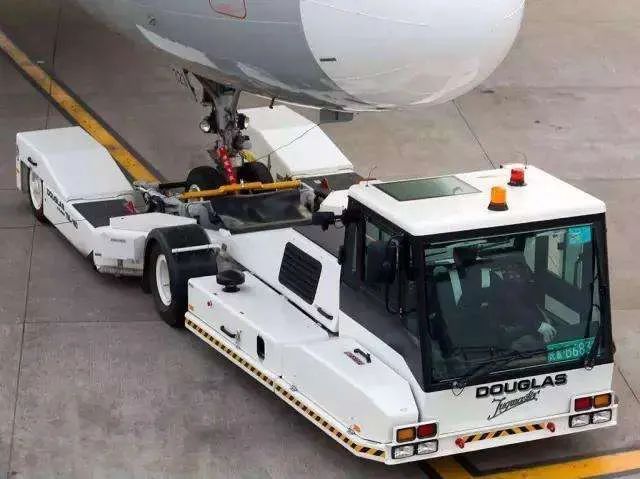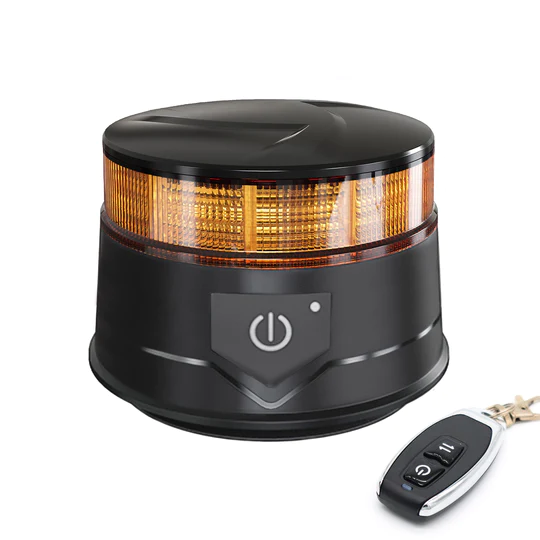In the bustling environment of airports, where every second counts and safety is paramount, ground support vehicles play a critical role in ensuring smooth flight operations. From aircraft tugs to baggage handlers, fuel trucks to passenger buses, each vehicle serves a unique purpose that collectively contributes to the airport's intricate dance of aviation logistics. Amongst the array of specialized equipment adorning these vehicles, beacon lights stand out as a fundamental safety feature. However, the traditional wired models, with their cables snaking through windows and impeding functionality, are giving way to a new era of wireless beacon lights, revolutionizing airport operations with their convenience and adaptability.

The Diverse Fleet of Airport Vehicles
First, let's delve into the myriad of vehicles that populate airport ramps and taxiways. Tow Tractors gently guide aircraft to and from gates, while Pushback Tugs maneuver larger aircraft safely for departure. Baggage Conveyor Vehicles swiftly transfer luggage from terminal to aircraft hold. Fuel Trucks supply the vital energy for flights, and Catering Trucks replenish in-flight meals. De-icing Trucks clear aircraft of ice and snow, and Passenger Buses ferry travelers to and from aircraft. Each vehicle is a vital cog in the airport machinery.
The Essential Role of Beacon Lights
Beacon lights serve as visual indicators, alerting other vehicles and personnel to the presence and movements of ground support equipment, thereby preventing collisions and enhancing overall safety. Traditionally, these lights were wired, drawing power from the vehicle's electrical system via cables that sometimes awkwardly across windows or hatches, compromising weatherproofing and creating inconvenience.
The Advent of Wireless Beacon Lights
Enter wireless beacon lights – a technological leap that addresses the limitations of their wired predecessors. These innovative devices, powered by rechargeable batteries, eliminate the need for cumbersome wiring, allowing for quick and easy installation without modifying vehicle structures. They adhere to magnetic surfaces or mount securely with brackets, freeing windows to perform their primary function and maintaining vehicle integrity.

Advantages of Wireless Beacon Lights in Airport Operations
1. Enhanced Safety and Visibility: Wireless beacon lights often incorporate the latest LED technology, ensuring superior brightness and visibility even in daylight or adverse weather conditions. Their ability to be mounted at strategic points on vehicles further augments visibility.
2. Ease of Installation and Maintenance: Without the hassle of wiring, installation becomes a straightforward process, reducing downtime and maintenance costs. Battery replacements or charging can be scheduled during routine vehicle checks, ensuring continuous operation.
3. Flexibility and Adaptability: The absence of fixed wiring permits easy repositioning or swapping of beacon lights between vehicles as operational needs dictate, making them highly adaptable to changing fleet configurations.
4. Weather Resistance: Designed for outdoor use, wireless beacon lights are typically sealed against moisture and dust, ensuring they perform reliably in all weather conditions without risk of electrical faults associated with exposed wires.
5. Future-Proofing Infrastructure: Embracing wireless technology aligns with the smart airport concept, where connectivity and automation are key. Integration with IoT platforms could enable remote monitoring of beacon status, predictive maintenance, and even dynamic adjustment of lighting patterns based on real-time operational scenarios.

Conclusion
As airports continue to strive for efficiency, safety, and sustainability, the transition to wireless beacon lights represents a significant step forward. These innovative devices not only streamline ground operations but also embody the spirit of technological progress, underpinning the evolution of aviation support systems. In an industry where every detail matters, wireless beacon lights shine as a beacon of progress, illuminating the path towards safer, smarter airport operations.